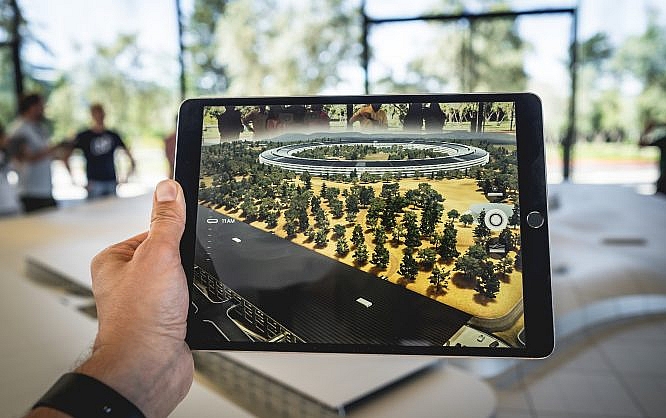Facing Up To Remote Reality: How AR And VR Is Reshaping Remote Work

The world of remote work is gathering momentum. The devastating impact of Coronavirus around the world has forced businesses to look into ways of keeping productive while employees stay safe at home. Widespread rethinks of how staff communicate with colleagues and maintain performance levels are imperative as companies look to adapt.
Remote work is here to stay, regardless of whether we’re facing up to lockdowns or are safely able to access our offices. But is it possible for businesses to communicate effectively with key staff operating away from a designated place of work?
Technology has made working from home possible, and advances in both augmented reality and virtual reality could pave the way for richer experiences than ever before.
The beauty of both AR and VR when it comes to remote collaboration and productivity is that it can create a multi-dimensional immersive experience for users, regardless of where they’re based.
Today, technology is already arriving that can digitally transport users into a virtual meeting room where rich information can be shared much faster than in face-to-face environments, with much more visual detail.
The arrival of AR and VR remote work can even help businesses to cut costs on office supplies and utilities - without the need of accommodating entire workforces onto office servers. While the removal of commutes can carry benefits for the health of employees and the environment alike.
Circumstances have forced the business world to evolve at a faster rate, and here’s how AR and VR can play an influential role in reshaping our perceptions of remote work:
Immersive Meetings
Most industries are built on some degree of communication between colleagues, clients and customers. These communicative measures have been difficult to uphold for companies looking to transition into remote work or enabling working from home (WFH) among employees.
Video conferencing solutions are gaining in popularity among remote businesses, and are an effective way or replicating face-to-face environments for users. However, it’s difficult for workers to share ideas in real-time and the technology often fails to provide an engaging platform for group meetings.
AR and VR can make a significant difference in alleviating the limitations of remote meetings. Platforms like MeetinVR allow users to build their own 3D avatars and turn to multidimensional model rendering to help bring life to their discussions.
While there are plenty of instant messaging and collaboration platforms available for employees to discuss their ideas, no technology has the power to provide virtual walkthroughs of designs and diagrams as much as virtual reality infused software.
Augmented reality is a key player in terms of bringing immersive meetings to businesses. Applications like Scope AR illustrate how users can interact and collaborate in real-time with real-world visual cues. Because AR overlays digital information on top of real-life environments, Scope AR helps a range of industries to assist staff remotely by adding digital information to a user’s line of vision.
Comprehensive Training
Due to the speed in which visual and 3D information can be shown to users, virtual reality has become a significant player in remote training for businesses.
VR helps to immerse staff into virtual presentation halls with built-in training programs and an array of engaging visual experiences to keep users tuned in.
One of the leading examples of VR education and training platforms can be found in ENGAGE. Providing businesses with the ability to host meetings, presentations, classes and events with as many as 50 remote participants, ENGAGE allows managers to build comprehensive experiences for users in a matter of minutes with its suite of tools.
It’s even possible for staff to record their hosting sessions in order to deliver the experience to others later on. The platform has an extensive library of 3D objects that can be used for training sessions, and users can even change their virtual backdrops and add effects into their modules.
Everybody has different approaches to learning, and the beauty of both AR and VR is that adaptive settings and content can be changed depending on the preference of employees. In a world that’s becoming increasingly remote, VR training platforms can pave the way for an experience that offers greater engagement than in-house training programs.
Visual Collaboration
The primary issue with the commonplace Skype and Zoom video meetings that have been popular at the beginning of the year is that users still lose out on interpreting valuable body language that helps to emphasise points or demonstrate sympathy.
Employees can suffer when visual cues are lost due to a low-definition webcam or missed expressions.
The immersive experience offered by VR platforms and AR software such as Augmentecture has the power to hurl users into an environment where every participant is fully engaged in their surroundings with no distractions lurking off-screen.
Here, meeting participants and trainees alike are fully focused on their vision as 3D avatars and detailed renderings provide informative and enlightening feedback.
As the values of remote work become increasingly apparent, businesses will need to look with increasing urgency towards facilitating the most immersive technology to support the WFH transition. In AR and VR, the solution looks set to be even better than our face-to-face past.
Photo by Patrick Schneider on Unsplash
